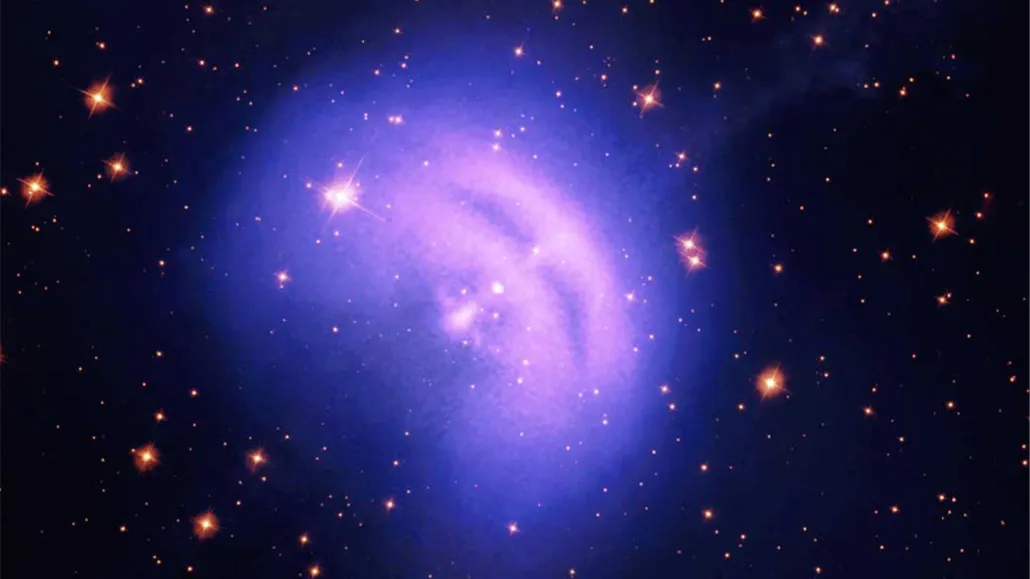
Left over from the supernova of a massive star, pulsars emit beams of light from their poles as they rotate rapidly. Scientists have now observed the most energetic pulsar radiation ever seen, hailing from the Vela pulsar (its wind nebula, shown). The discovery challenges notions of how the beams are generated.
X-RAY: (IXPE) FEI XIE, MSFC/NASA & (CHANDRA) SAO/CXC/NASA; OPTICAL: CHANDRA, STSCI HUBBLE/NASA, PROCESSING BY JUDY SCHMIDT; HUBBLE/CHANDRA/IXPE PROCESSING & COMPOSITING BY KIMBERLY ARCAND & NANCY WOLK, SAO/CXC/NASA







